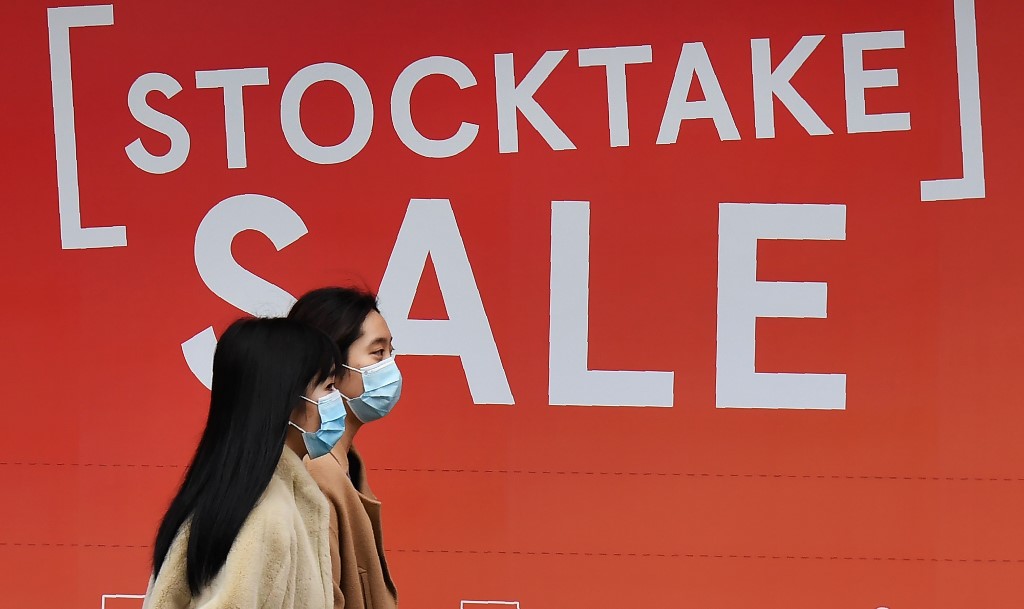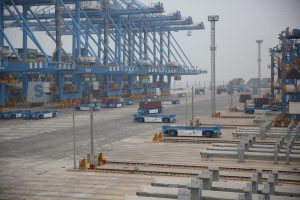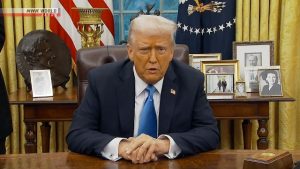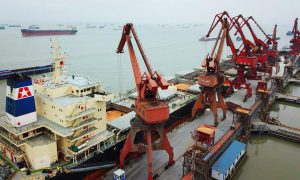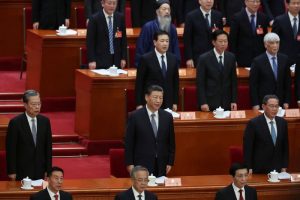Australia is heading for its first recession in nearly three decades after the economy shrunk in the January-March quarter, with a “far more severe” reading expected in the next three months as the effects of the virus shutdown bite.
The 0.3% contraction was the first quarterly drop since 2009 during the global financial crisis and came as the lockdown exacerbated the impact of a prolonged drought and massive bushfires.
And while it was smaller than the forecast 0.4% drop, Treasurer Josh Frydenberg said Australia was now on track to enter its first recession since 1991 “on the basis of the advice that I have from the Treasury Department about where the June quarter is expected to be”.
“The economic impact will be severe. Far more severe than what we have seen today,” Frydenberg said.
Authorities ordered numerous businesses shut and closed the country’s international borders to stem the spread of Covid-19, costing the economy billions of dollars but achieving success in containing the virus.
Frydenberg said the negative March quarter “compared very well” to results in countries including China, France and Britain, showing the Australian economy’s “remarkable resilience”.
“We were on the edge of the cliff. What we were facing was an economist’s version of Armageddon,” he said.
“We have avoided the economic fate, and the health fate, of other nations because of the measures that we have taken as a nation.”
The government has effectively bankrolled swathes of the economy – subsidising wages and urging rent deferrals in order to keep businesses on life support until normal life returns.
Millions out of work
Millions of Australians have lost their jobs or seen hours slashed, but officials hope a three-stage approach to lifting virus restrictions will help restore the economy.
National Australia Bank’s Kaixin Owyong said the economy would likely shrink 8.4% in the next three months.
But she added that the lifting of restrictions earlier than expected “points to economic recovery beginning in the third quarter, with high-frequency indicators… showing spending is picking up as restrictions are eased”.
She did, however, warn that a full rebound was some time off as borders were still closed, which will continue to hit trade.
“Full recovery will also require confidence in health and economic outcomes to be restored, where households may remain cautious for some time given record job losses and with the labour market historically lagging recovery in activity,” she added.
Australia has recorded about 7,200 cases and 102 deaths from coronavirus, with many regions now regularly reporting zero new daily cases.
Universities could lose $11 billion
Meanwhile, Australian universities could lose up to US$11 billion dollars as an indefinite coronavirus border closure locks out the foreign students who keep the sector afloat, the industry said on Wednesday.
Lobby group Universities Australia said the revenue shortfall would have a lasting impact on not only higher education staffing and facilities but also undermine the sector’s world-class research and innovation.
Education is Australia’s third-largest export – behind only iron ore and coal – with more than 500,000 international students enrolled last year, bringing about A$32 billion (US$22 billion) into the economy.
Universities Australia said its modelling showed the sector could expect coronavirus-linked revenue losses of up to A$4.8 billion in 2020, growing to A$16 billion through to 2023.
“Not only does that revenue support the staff and facilities to educate the next generation of skilled workers, it also pays for much of the research and innovation that keeps Australia internationally competitive,” the group’s CEO Catriona Jackson said.
Universities are pushing hard for a cash injection after being ruled ineligible for government wage subsidies during the pandemic, putting more than 20,000 academic and support staff jobs at risk.
Australia’s schools were almost halfway through their first semester when Prime Minister Scott Morrison controversially told struggling international students to “go home” on April 3 as the country began locking down businesses to curb the spread of Covid-19.
Stranded students
Many students remain stranded in the country and are relying on charities for food handouts after they were excluded from government support packages designed to cushion the economic hit from the epidemic.
Morrison has said the ban on foreign travellers will likely continue for months, although some states are considering exemptions for foreign students willing to undergo a mandatory 14-day quarantine on arrival.
Australia was also one of the first countries to close its doors to Chinese citizens in the early stages of the coronavirus outbreak, shutting off the country’s largest source of international students.
The university sector’s dependence on Chinese students has sparked a string of other controversies, including clashes between pro- and anti-Beijing students on campuses in 2019 and the suspension of a high-profile Chinese Communist Party critic by the University of Queensland last week.
AFP




